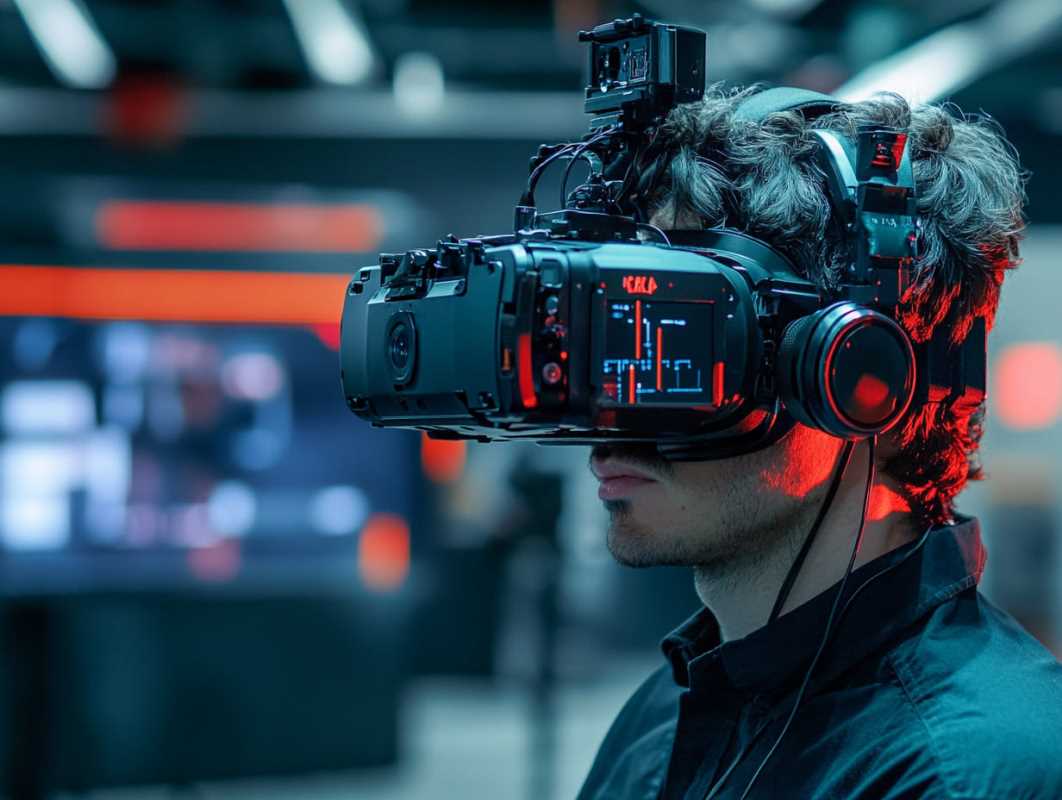Picture yourself entering a realm where the lines between the digital universe and the physical world vanish without a trace. This is the exhilarating potential of virtual reality, a domain where immersive experiences transport users into entirely new dimensions. Crafting such extraordinary environments goes beyond merely using advanced graphics; it requires a mastery of sophisticated Human-Computer Interaction (HCI) techniques. By harnessing the latest HCI methods, developers can vastly improve the quality and responsiveness of VR experiences, transforming them into more captivating, interactive, and user-friendly adventures. The result is a journey that feels both thrilling and profoundly real.
Understanding Human-Computer Interaction (HCI)
Human-Computer Interaction, commonly known as HCI, studies how people interact with computers and designs technologies that allow humans to interact with computers in novel ways. It's a multidisciplinary field that combines elements of computer science, cognitive psychology, and design to create user-friendly systems. The primary goal of HCI is to improve the interactions between users and computers by making systems more intuitive and efficient.
In the realm of computing, HCI plays a crucial role in shaping the user experience. It encompasses everything from the layout of a software interface to the responsiveness of a virtual environment. By understanding the needs and behaviors of users, HCI professionals design systems that meet functional requirements and provide a pleasant and satisfying user experience.
Current Challenges in Virtual Reality
While virtual reality has made significant strides, several challenges still hinder the development of truly immersive experiences:
- Latency Issues: Delays between user actions and system responses can break the sense of immersion.
- Motion Sickness: Inconsistent frame rates and lag can cause discomfort and disorientation for users.
- User Interface Limitations: Traditional input devices may not provide the level of interaction needed for complex virtual environments.
- Hardware Constraints: High-quality VR systems require powerful hardware, which can be expensive and inaccessible to many users.
- Content Availability: There is a limited amount of high-quality VR content available, restricting the potential applications of the technology.
Advanced HCI Methods
To overcome these challenges, developers turn to various advanced methods in HCI. One such method is gesture recognition, which allows users to interact with virtual environments more naturally using hand movements and body language. This approach reduces reliance on traditional controllers and makes interactions feel more intuitive.
Another innovative technique is adaptive user interfaces, which dynamically adjust to the user's behavior and preferences. By analyzing how users interact with the system, these interfaces personalize the experience, making it more engaging and efficient. The integration of eye-tracking technology enables more precise interactions and provides valuable data on user focus and attention, further enhancing the VR experience.
Impact on User Experience
Implementing advanced HCI methods can profoundly impact user experience in virtual reality:
- Enhanced Engagement: More natural interactions keep users immersed and invested in the virtual environment.
- Increased Accessibility: Adaptive interfaces and alternative input methods make VR experiences accessible to a broader audience, including those with disabilities.
- Improved Comfort: Reducing latency and minimizing motion sickness through optimized interactions ensures a more comfortable experience.
- Personalization: Tailoring the experience to individual preferences enhances user satisfaction and retention.
- Greater Realism: Advanced input and feedback mechanisms contribute to a more believable and lifelike virtual world.
Future Trends in VR and HCI
The future of virtual reality and HCI is poised for exciting developments. One emerging trend is the use of brain-computer interfaces (BCIs), which could allow users to control virtual environments directly with their thoughts. This technology holds the promise of creating even more immersive and seamless interactions, eliminating the need for physical input devices altogether.
Another anticipated innovation is the integration of artificial intelligence (AI) to create more responsive and intelligent virtual environments. AI enables virtual characters to interact with users in more meaningful ways, adapting to their actions and providing personalized experiences. Advancements in haptic technology are expected to enhance the tactile feedback in VR, allowing users to feel textures and resistance, further bridging the gap between the virtual and physical worlds.
As technology continues to evolve, the synergy between virtual reality and human-computer interaction will drive the creation of more sophisticated and engaging experiences. Addressing current limitations and embracing new methodologies makes the potential of virtual reality to change entertainment, education, healthcare, and various other fields increasingly attainable.
Innovative HCI methods are key to unlocking the full potential of virtual reality, making experiences more immersive, accessible, and seamlessly connected to our everyday lives.
 (Image source: Midjourney)
(Image source: Midjourney) 





